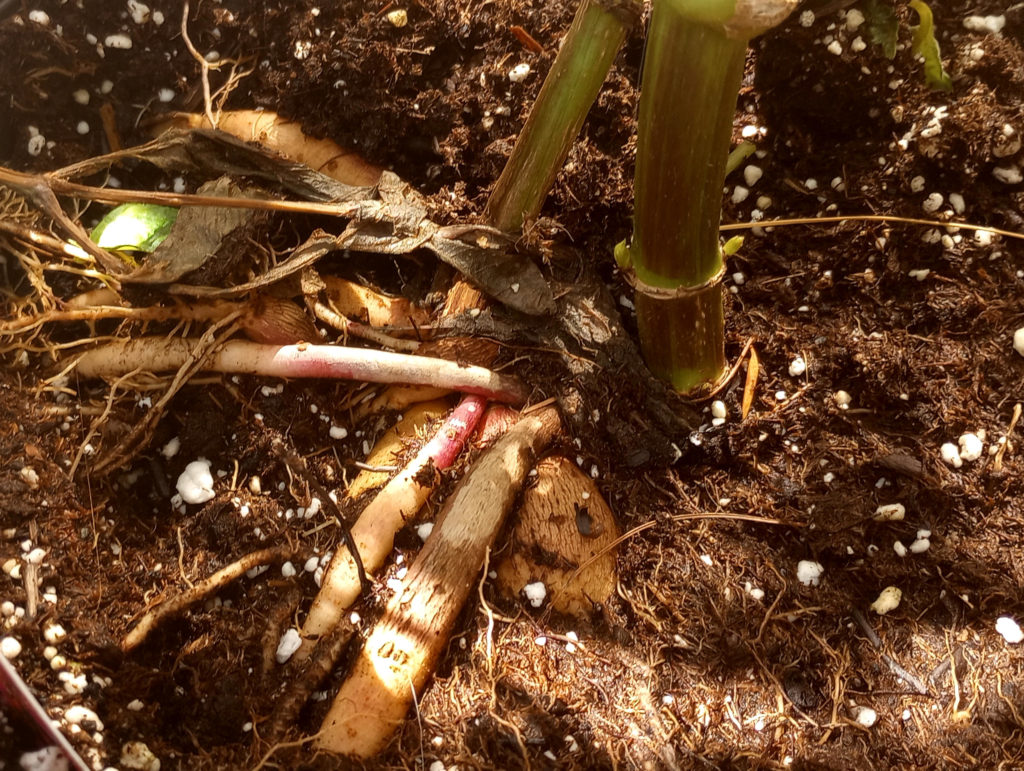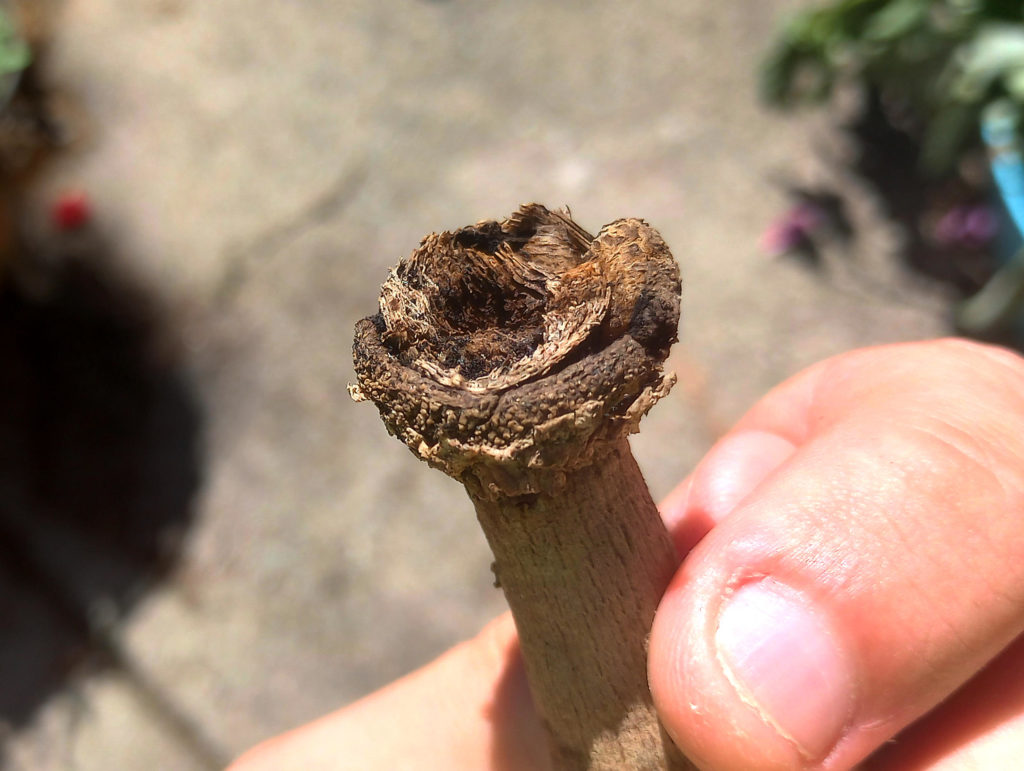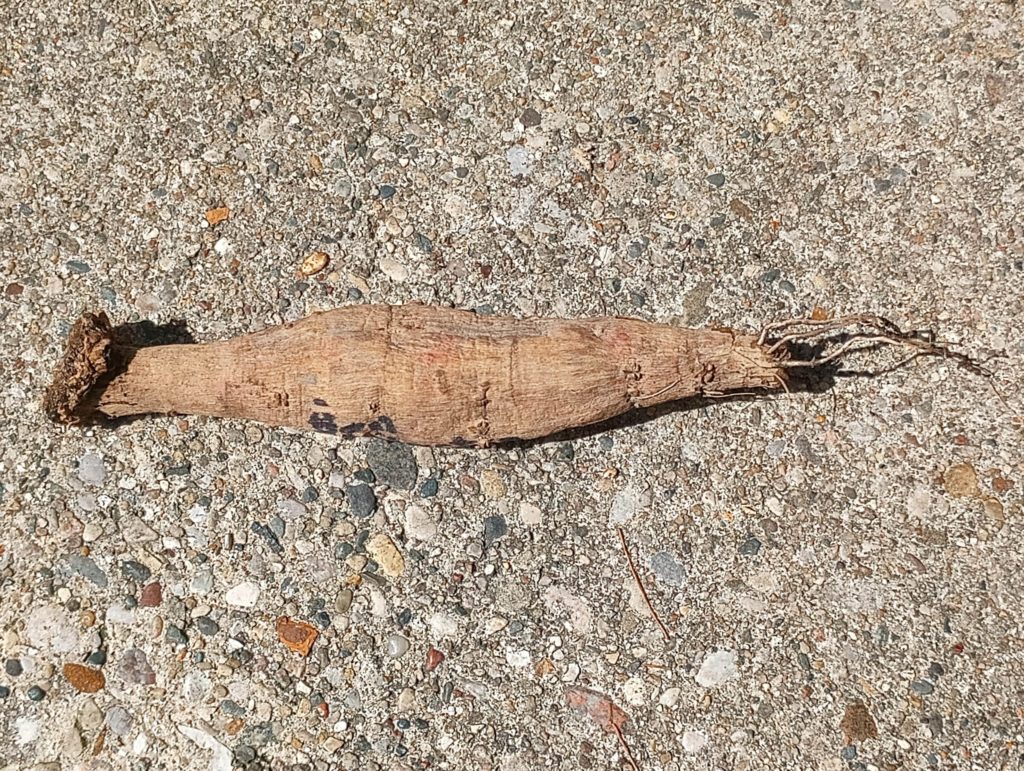Along your dahlia growing journey, you will likely come across some tubers that are known as blind tubers. A blind dahlia tuber has no eyes. In this guide, I’m going to walk through how to identify a blind tuber.
Back to Basics
Before continuing, it’s important to quickly review the parts of a tuber.
Parts of a Dahlia Tuber
There are five main parts of a tuber. There is the tail, body, neck, crown, and, what we will be focusing on here — the eyes, or lack thereof.

What is Blind Dahlia Tuber?
A blind dahlia tuber is a tuber without eyes. This means that no sprouts will form and nothing will come of it other than roots. It will never develop into a plant.
Tuber Production
Healthy dahlias can ordinarily produce several tubers. After roughly 120 days, viable tubers for the following season are ready for harvest. The tubers in the following photo are partially visible after some soil was removed (and replaced after taking the photo).

Pre-sprouting
After tubers have been in winter storage, you can take them out around April 1 (at least in Zone 5). It is also a good time to divide them.
Get a garden tray, add an inch of potting soil or vermiculite. Then, lightly mist the added soil or vermiculite. Next, lay the tubers horizontally. Ensure your tubers are labeled so you can identify them.
Finally, completely cover all tubers enough that they are not visible. Put the tray but a sunny window or slider door. Mist the tray as needed, but do not water directly. After 4-5 weeks, most tubers will form a sprout.
If you find one or more of your tubers have not sprouted in 4-5 weeks, keep them in a tray or pot and move them outdoors once the weather warms up. Keeping the tubers in a tray allows you to take them indoors when it rains.
How You Can Check If a Tuber Is Blind
If any of your tubers still have not sprouted above the soil after moving your tray outside, you likely have blind tubers. To check, unearth the tubers in your tray and inspect the crown.

Check for eyes, which appear as pinkish or white growths on the crown. Slowly rotate the tuber and carefully inspect all sides of the crown.

If you see no eyes anywhere on the crown, you have a blind dahlia tuber. It’s sad, but it happens with the best of dahlia growers!

What to Do If You Have a Blind Dahlia Tuber
If you have a compost pile, you can compost your blind tubers. They don’t really have any other use, they’re duds.
In Conclusion
What tips do you have for identifying blind tubers? What are ways that you have accelerated the growth of your tubers? I would love to know down below in the comments section.

0 Comments